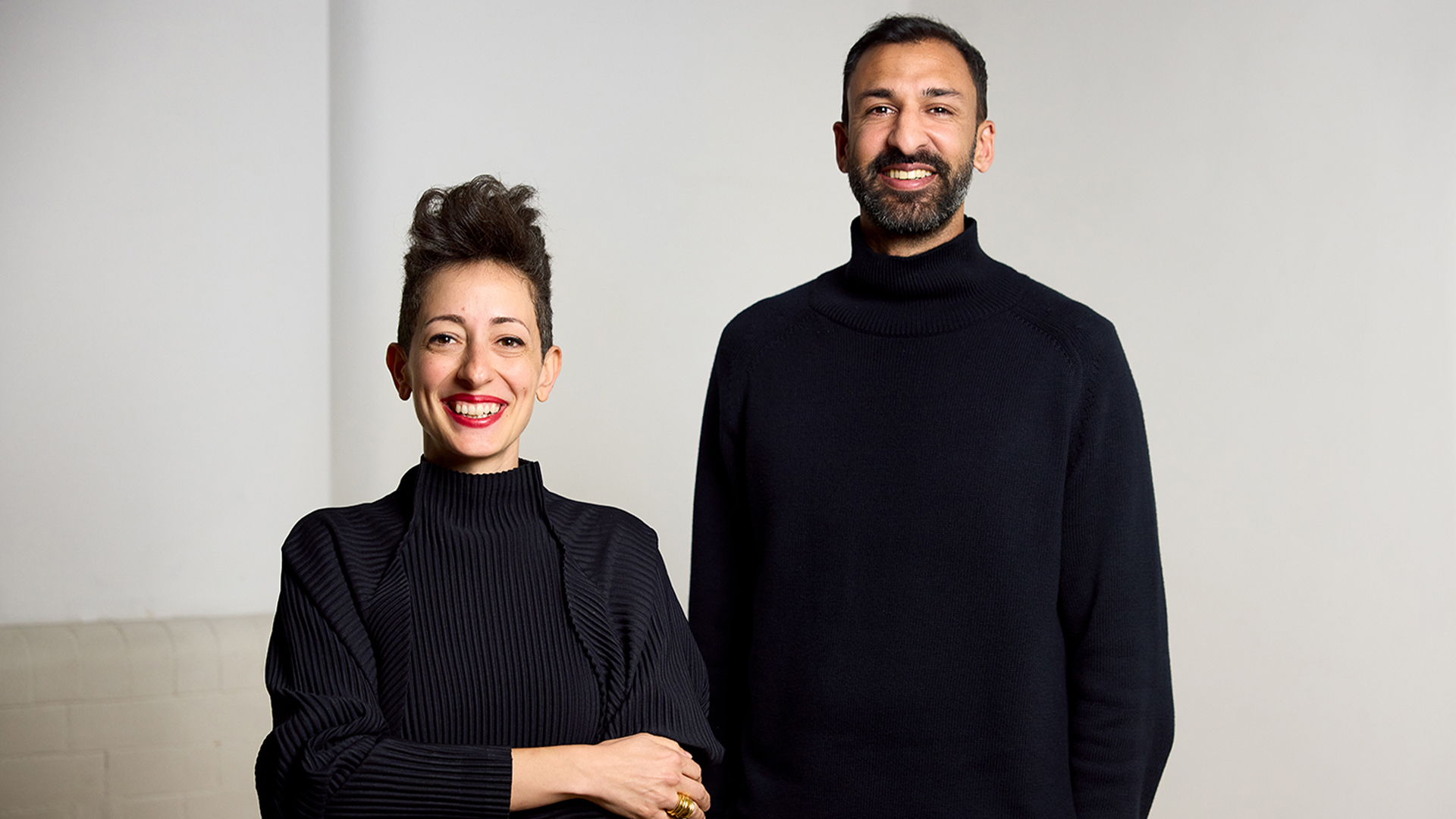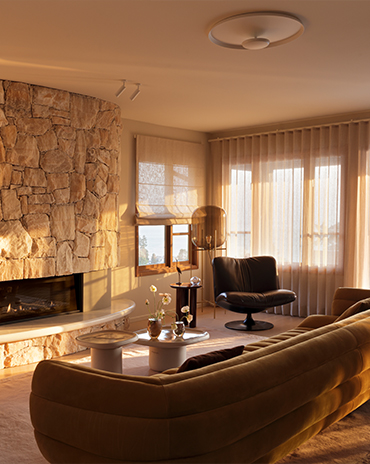Copyright © 2025 Motivate Media Group. All rights reserved.
Architects Lina Ghotmeh and Asif Khan are set to design two major museums for AlUla in Saudi Arabia
These will include the museum of the Incense Road as well as a contemporary art museum

The Royal Commission for AlUla has tapped architects Lina Ghotmeh and Asif Khan to design two upcoming museum projects set for Saudi Arabia’s site of natural and human heritage, consisting of a contemporary art museum as well as a museum that explores the story of the Incense Road.
The architects were chosen through an international competition with jury comprising of key stakeholders and specialists in architecture, landscape and museology, and chaired by Dr Khaled Azzam, the architect of AlUla’s Journey Through Time Masterplan.
We are excited to announce the appointed architects to these two significant museums – the first of 15 cultural assets being developed as part of AlUla’s Journey Through Time Masterplan,” says Dr Azzam. “This Masterplan will guide the reinvigoration of AlUla, establishing a new cultural legacy including the implementation of a circular economy expected to create 38,000 new jobs.”
Both architects have already set a prominent mark on the architectural field. Khan is known for his radical approach to architecture that explores various histories and futures, while focusing on material exploration and the social context of his projects. He has been awarded a MBE for his services to architecture and is currently working on the renewal of the Barbican Centre and the new London Museum, and has already made his mark on the region with his involvement with Expo 2020 Dubai.
Ghotmeh’s practice focuses on historical research and looks at how the urban landscape can exist in symbiosis with nature, engaging memory and the senses. She is currently designing the 2023 Serpentine Pavilion. For Alula, Ghotmeh has been appointed to design the contemporary art museum, which will feature a series of garden pavilions.
AlUla’s contemporary art museum will feature both regional and global contemporary art with the region at its heart, with core works by artists hailing from regions adjoining the Red Sea, the Arabian Sea and the Eastern Mediterranean in dialogue with their contemporaries from across the world. It will also include a series of commissioned works.
Although images have not yet been revealed, the museum is said to comprise an adjoining series of artist-designed gardens- designed as an archipelago of pavilion galleries – that connect to the landscape, integrated into the AlUla oasis, and set among vegetable gardens, palm groves, mountain ranges and an ancient settlement. It will explore sensitive environmental design and function as a catalyst for environmental renewal and regeneration of the oasis.
“The architecture of the contemporary art museum in AlUla immerses visitors in a creative journey from the desert expanse to the lush cultural oasis of AlUla, interweaving the natural environment, agriculture and art to reveal the heart of contemporary culture,” Ghotmeh describes. “Through a series of garden pavilions, the museum presents a constant interplay between art and nature, capturing the essence of this unique place. The galleries offer surprising and anchored perspectives on the many facets of AlUla, from the microclimates of the oasis to the expanse of the desert, evoking a deep sense of attachment to the land and its heritage.”
Khan, on the other hand, will be designing the museum of the Incense Road, which he describes as more a public space than a traditional museum – the first museum of its kind to be dedicated to this millenia-old network of major land and sea trading routes. Celebrating AlUla’s cultural legacy as a place of exchange at the confluence of civilisations. Narratives will include spotlighting the discoveries of ongoing excavations, highlighting the active nature of AlUla’s archaeological sites and the cultural importance of the Incense Road.
The museum of the Incense Road is being developed in dialogue with AlUla’s ancient heritage – including Hegra, Saudi Arabia’s first UNESCO World Heritage Site – and its host village, AlJadidah. It will be an extension of the urban fabric that sits towards the oasis edge, looking out on a vista where Dadan and Hegra – once vibrant cities that thrived as a result of the Incense Road – are located. It will be developed through extensive local and international collaboration with specialists across fields including academia and museology.
“AlUla resonated with me deeply as did the local community members I met,” Khan recalls. “The design takes the form of a public space, not a museum within walls, situated in AlJadidah village with galleries and spaces for sensory experiences and learning. The mountains are a constant background, whose sand dunes reach down to greet the edges of the museum, while stepped terraces of gardens act as a new interface between the village and the oasis.
“I am excited about how the museum of the Incense Road can be brought into the collective memory of the world, and become a transformative asset for the local community,” he adds.
Both museums aim to offer an entry point into AlUla’s extensive cultural offering and is planned to be developed with a socially responsible approach to the preservation, interpretation, meaningful community engagement and presentation of AlUla’s cultural inheritance. It is also said to be considerate on reducing environmental impact with regards to conservation, controlled temperature, humidity and lighting, and will work with a network of cultural leaders at an institutional, thematic and discipline level in the spirit of reciprocal exchange.
The Latest
Highlights of the Biennale Architettura 2025
We shine a light on the pavilions from the Arab world at the Venice Architecture Biennale, on display until Sunday 23 November 2025
Read ‘Bold Design’ – Note from the editor – July/August 2025
Read identity magazine's July/August 2025 edition on ISSUU or grab your copy at the newsstands.
Things to Covet in June 2025
Elevate your spaces with a pop of colour through these unique pieces
Designing Spaces with Purpose and Passion
We interview Andrea Savage from A Life By Design – Living & Branding on creating aesthetically beautiful and deeply functional spaces
Craft and Finesse
EMKAY delivers a bold and intricate fit-out by transforming a 1,800 sqm space into SUSHISAMBA Abu Dhabi, a vibrant multi-level dining experience
An Impressive Entrance
The Synua Wall System by Oikos offers modularity and style
Drifting into Summer
Perennials unveils the Sun Kissed collection for 2025
The Fold
Architect Rabih Geha’s collaboration with Iwan Maktabi
From Floorplans to Foodscapes
For Ayesha Erkin, architecture was never just about buildings, but about how people live, eat, gather and remember
Between Sea and Sky
Cycladic heritage, heartfelt hospitality and contemporary design converge on Deos Mykonos, designed by GM Architects
A Fresh Take on ’70s Style
Curved shapes and colourful artworks bring vibrancy to this contemporary home with mesmerising nature views
















